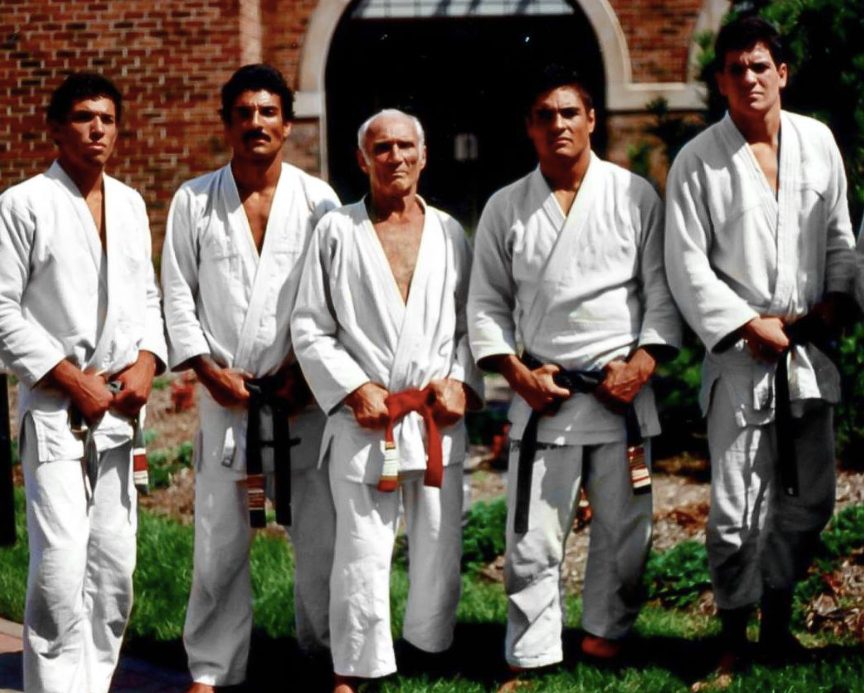Brazilian Jiu-Jitsu (BJJ) originates from the Gracie family, particularly brothers Carlos and Helio Gracie. The art itself traces back to the teachings of Mitsuyo Maeda, a Japanese judo expert who brought his knowledge to Brazil in the early 20th century. Carlos Gracie became Maeda’s student and later taught his younger brother Helio. Despite Helio’s smaller physique, he adapted the techniques to rely on leverage and technique over strength, laying the foundation for what would become Brazilian Jiu-Jitsu.
In 1925, Carlos Gracie opened the first Gracie Jiu-Jitsu Academy in Rio de Janeiro. The Gracie family’s style emphasized ground fighting and submission holds, making it suitable for smaller practitioners. Their challenge matches, known as the Gracie Challenge, pitted their techniques against other martial arts in no-holds-barred contests, showcasing the effectiveness of their system.
Expansion and the Birth of Modern BJJ
Throughout the mid-20th century, BJJ has evolved and gained popularity in Brazil. Helio Gracie’s notable matches, such as his fight against Masahiko Kimura in 1951, brought further attention to the art. Despite losing to Kimura, Helio’s resilience and technique highlighted the effectiveness of BJJ. His bout against Waldemar Santana, which lasted over three hours, became legendary, further cementing BJJ’s reputation.
The Gracie family’s influence extended beyond Brazil in the latter half of the 20th century. Rolls Gracie, a prominent family member, traveled to the United States to introduce BJJ to American audiences. This international exposure was pivotal in spreading the martial art beyond Brazil.
UFC and Global Recognition
Royce Gracie’s impact on Brazilian Jiu-Jitsu (BJJ) and mixed martial arts (MMA) through his participation in the first Ultimate Fighting Championship (UFC) in 1993 is monumental. The Denver, Colorado event sought to determine the most effective martial art by pitting practitioners from various disciplines against each other. Royce, weighing only 178 pounds, used his mastery of BJJ to defeat much larger opponents, thereby proving the effectiveness of the techniques developed by his family.
In the inaugural UFC tournament, Royce Gracie faced and submitted three opponents, including a professional boxer, Art Jimmerson, a wrestler, Ken Shamrock, and a savate expert, Gerard Gordeau. These victories showcased BJJ’s focus on ground fighting and submissions, strategies that were relatively unknown to many fighters at the time. Royce’s success was not just about winning but demonstrating that skill and technique could triumph over brute strength and size.
The financial rewards for Royce’s victories were significant then, with the winner of UFC 1 taking home $50,000. These events underscored the commercial potential of MMA and BJJ, contributing to the rapid growth of both sports.
The Spread of BJJ Globally
As BJJ gained popularity in the United States, thanks partly to the UFC, it began to spread globally. Practitioners from various backgrounds brought their techniques and strategies, enriching the art form.
BJJ academies started to appear in countries worldwide, from Europe to Asia, making it a truly international martial art. The sports aspect of BJJ flourished, with competitions like the World Jiu-Jitsu Championship and the ADCC Submission Wrestling World Championship drawing global attention.
BJJ’s Modern Era
Today, Brazilian Jiu-Jitsu is practiced by millions worldwide. It has evolved to include traditional gi (uniform) and no-gi styles, catering to a broad range of practitioners. BJJ is recognized not only as an effective self-defense system but also as a competitive sport.
Its techniques, which include a variety of chokes, joint locks, and ground control positions, are taught in martial arts schools globally, fostering a strong sense of community and discipline among its practitioners.
Additionally, the growth and popularity of these competitions can be compared to the rise of interest in fantasy sports, with the best DFS sites drawing global participants who engage in strategic, skill-based competitions.
The Gracie Legacy and Influence
The Gracie family continues to play a significant role in the BJJ community. Many family members remain active as instructors, competitors, and ambassadors of the art. Their academies and affiliations ensure the continued spread and evolution of BJJ. Figures like Rickson Gracie and Royler Gracie have maintained high standards in competition and instruction, perpetuating the family’s influence on new practitioners.
Moreover, the Gracie family has contributed to BJJ’s broader cultural and media impact. Their involvement in films, documentaries, and public demonstrations has brought further attention to the art, making it accessible to a wider audience.
Conclusion
BJJ is not just a martial art but a global community. It attracts people of all ages and backgrounds, drawn by its effectiveness in self-defense and its fitness and mental discipline benefits. BJJ academies can be found in almost every major city, fostering a sense of camaraderie and mutual respect among practitioners.

















